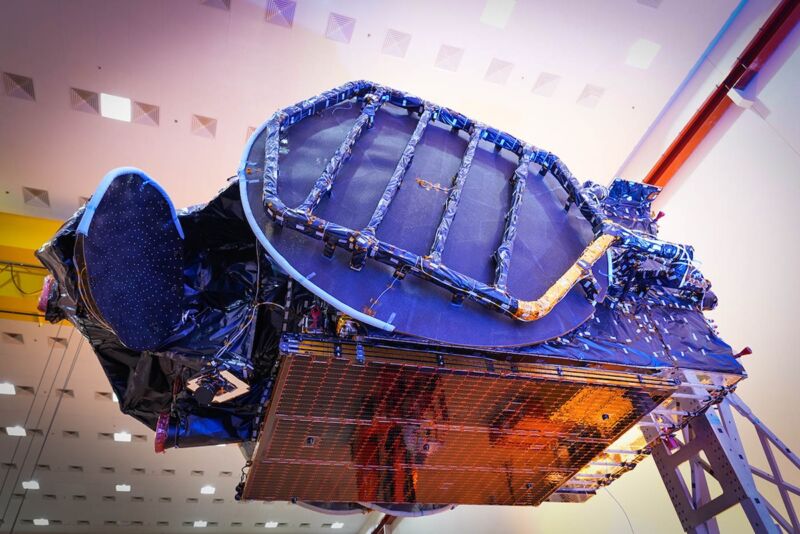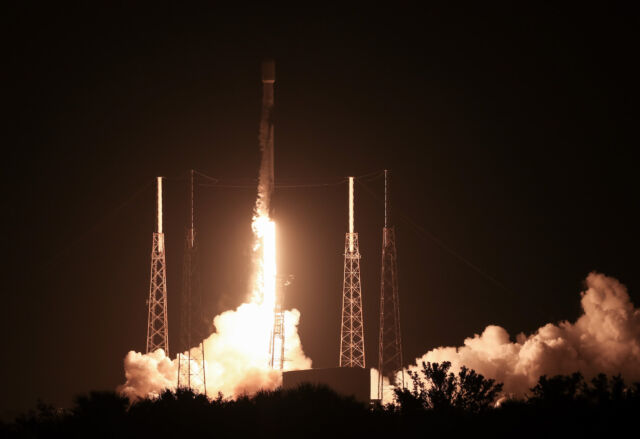Space
Satellite operators poised for $9 billion payday after clearing C-band spectrum
Intelsat, SES are on track to get nearly $9 billion in FCC incentive payments.

A SpaceX Falcon 9 rocket launched early Thursday with the last of a dozen new C-band video relay satellites purchased by Intelsat and SES to help clear spectrum for the rollout of 5G wireless services in the United States.
Intelsat and SES, two of the world's largest geostationary communications satellites operators, are on track to receive nearly $9 billion in incentive payments from 5G cell network operators by the end of the year. The payments are due after Intelsat and SES clear the lower 300 MHz of C-band spectrum, which is being transitioned from satellite services to terrestrial 5G under the supervision of the Federal Communications Commission.
In order to enable the 5G transition, Intelsat and SES purchased new satellites in 2020 designed to operate in a different portion of the C-band spectrum. Although the communications satellite industry is shifting to focus on Internet connectivity—a trend highlighted by new mega-constellations like SpaceX's Starlink—there's still a substantial market for traditional C-band services, primarily for cable television and video distribution that reach more than 100 million homes and businesses across North America.
The agreement between satellite operators, 5G service providers, and the FCC set up a framework to pay Intelsat and SES incentives if they fully transitioned off the lower 300 MHz of C-band spectrum by December 2023, two years before the FCC's mandated deadline.
Intelsat and SES began launching their new C-band satellites last year. The last of the 12 C-band satellites—an Intelsat spacecraft named Galaxy 37—launched at 1 am EDT (05:00 UTC) Thursday from Cape Canaveral, Florida, aboard a SpaceX Falcon 9 rocket. The rocket's reusable booster stage returned to landing on an offshore drone ship, while the upper stage propelled its payload into a high-altitude orbit.
The 11,162-pound (5,063-kilogram) Galaxy 37 satellite, built by Maxar, will maneuver itself into geostationary orbit more than 22,000 miles (nearly 36,000 kilometers) over the equator over the next few weeks. It should be ready for operational service in October, according to Jean-Luc Froeliger, senior vice president of space systems at Intelsat.

With the launch of Galaxy 37, also called Horizons 4, Intelsat is on pace to fully transition off of the lower 300 MHz of C-band spectrum by the December 5 deadline to make the company eligible for its incentive payments.
“It’s going to be before December, and with Galaxy 37’s launch, we’ll be completing our in-orbit refresh and we are on target for that milestone," Froeliger told Ars in an interview.
SES launched its last new C-band satellites in March. That company's CEO, Ruy Pinto, said Thursday that its C-band clearing work is complete. SES's proceeds in the C-band clearing operation will total $3.97 billion.
"After more than three years of hard work from many inside and outside SES, we have cleared the 300 MHz of C-band spectrum in the US ahead of schedule," Pinto said in a conference call discussing the company's earnings.
Keeping busy
The last launch for the C-band clearing program ends an unprecedented pace of satellite deployments for Intelsat and SES. Intelsat has launched eight large geostationary satellites in the last 10 months, including C-band platforms and one additional geostationary communications spacecraft targeting a different market segment.
“I think this is a record for Intelsat, and as far as I can tell a record for the industry, that is eight satellites being constructed and launched to geostationary orbit in the last 10 months," Froeliger said.
The C-band clearing effort represented a boon to satellite manufacturers and launch companies. The 12 C-band satellites successfully launched on seven individual rockets—five SpaceX Falcon 9s, one United Launch Alliance Atlas V, and one European Ariane 5 rocket from Arianespace.
“We kind of spread the workload because some of the satellites were built by Maxar, some by Northrop Grumman," Froeliger said. "But it’s been the same Intelsat team that’s been performing the in-orbit tests on all of those satellites since October.”
SES has launched five geostationary satellites for the C-band clearing program over a 13-month period, plus four broadband satellites for the O3b mPOWER network in medium-Earth orbit, an orbital regime between lower-altitude satellites and geostationary orbit above.
Intelsat was founded in 1964 as an intergovernmental organization and was then reorganized as a public company in 2001. Intelsat filed for bankruptcy in 2020 and emerged from the process as a private company in 2022.
During the Chapter 11 proceeding, SES petitioned the US bankruptcy court to equally split the C-band clearing proceeds, claiming Intelsat broke an agreement to share the payments 50-50. Intelsat said that agreement was voided when the FCC decided on a public auction of the C-band spectrum rather than a private selloff managed by the satellite companies themselves.
The litigation is still ongoing after a federal appeals court sent the case back to the bankruptcy court, saying a judge there had erred in rejecting SES's claim regarding the equal sharing agreement, according to a report in Space News.

